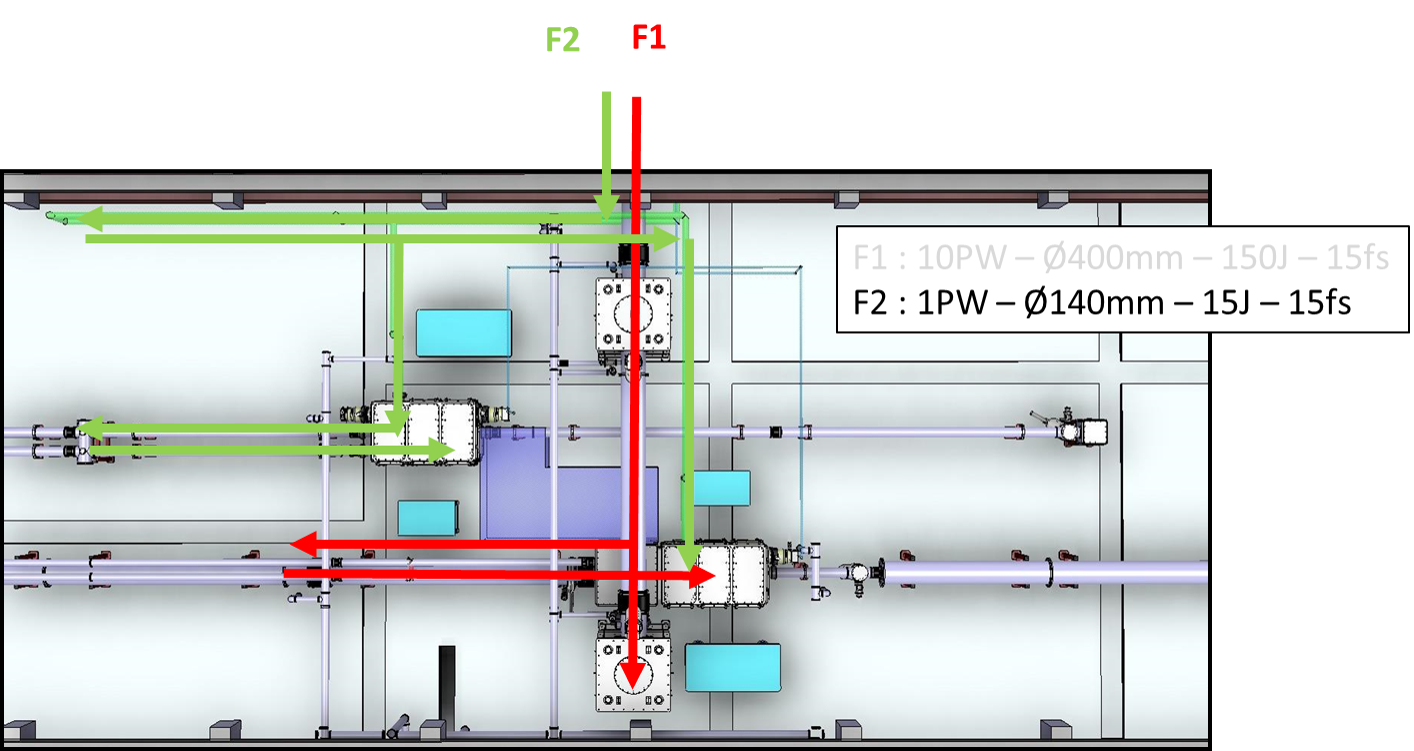The APOLLON facility occupies about 4,500 m². The laser hall is located in an ISO8 cleanroom with a useful area of 800 m² and the laser beams are distributed across two experimental rooms, covering surfaces of 280 m² (SFA) and 490 m² (LFA, allowing focal lengths of several tens of meters). 5 m-thick concrete walls provide full radio protection.
Currently, one laser beam - F2 - is available in LFA. It is focused by a telescope combining a plane mirror with a hole and an on-axis spherical mirror. The focal length of this latter can be either 3 meters (for a focal spot diameter of 45 µm) or 9 meters (for a focal spot of 135 µm).
LFA is equipped with two independent interaction chambers (H98xW119xL135cm) but only one is currently operational.
F2-LFA
The contrast is 10^12 up to 60 ps and 10^7 at 1 ps.
APOLLON support
An area of 520 m² is dedicated to support activities such as the control of optical components, a laser development space for new diagnostics, and a vacuum outgasing control laboratory. There are also 650 m² of control rooms, meeting rooms, and offices for operating teams and users.
In addition, a target lab is available at the LULI laboratory. Its main function is to provide the necessary skills to manufacture and characterize targets used for the experiments. Various designs and aspects are studied, ranging from simple sheets of solid materials to liquid or gaseous cells.
- Time-resolved studies
- Time-resolved studies
- Time-resolved studies
- Fluorescence imaging
- Elastic scattering
- Inelastic scattering
- Astronomy/Astrophysics/Astroparticles
- Atomic & molecular physics
- High energy & particle physics
- High-field science, non-linear X-ray Optics
- Matter under extreme conditions, warm dense matter, plasmas
- Optics
- Quantum electronics & optics
- depending on the implemented diagnostic instrument and on the providing company (ANDOR, HAMAMATSU, etc.)
- depending on the implemented diagnostic instrument and on the providing company: mainly binary files
- depending on the implemented diagnostic instrument and on the providing company: .sif, .img, .txt, .dat, etc.
